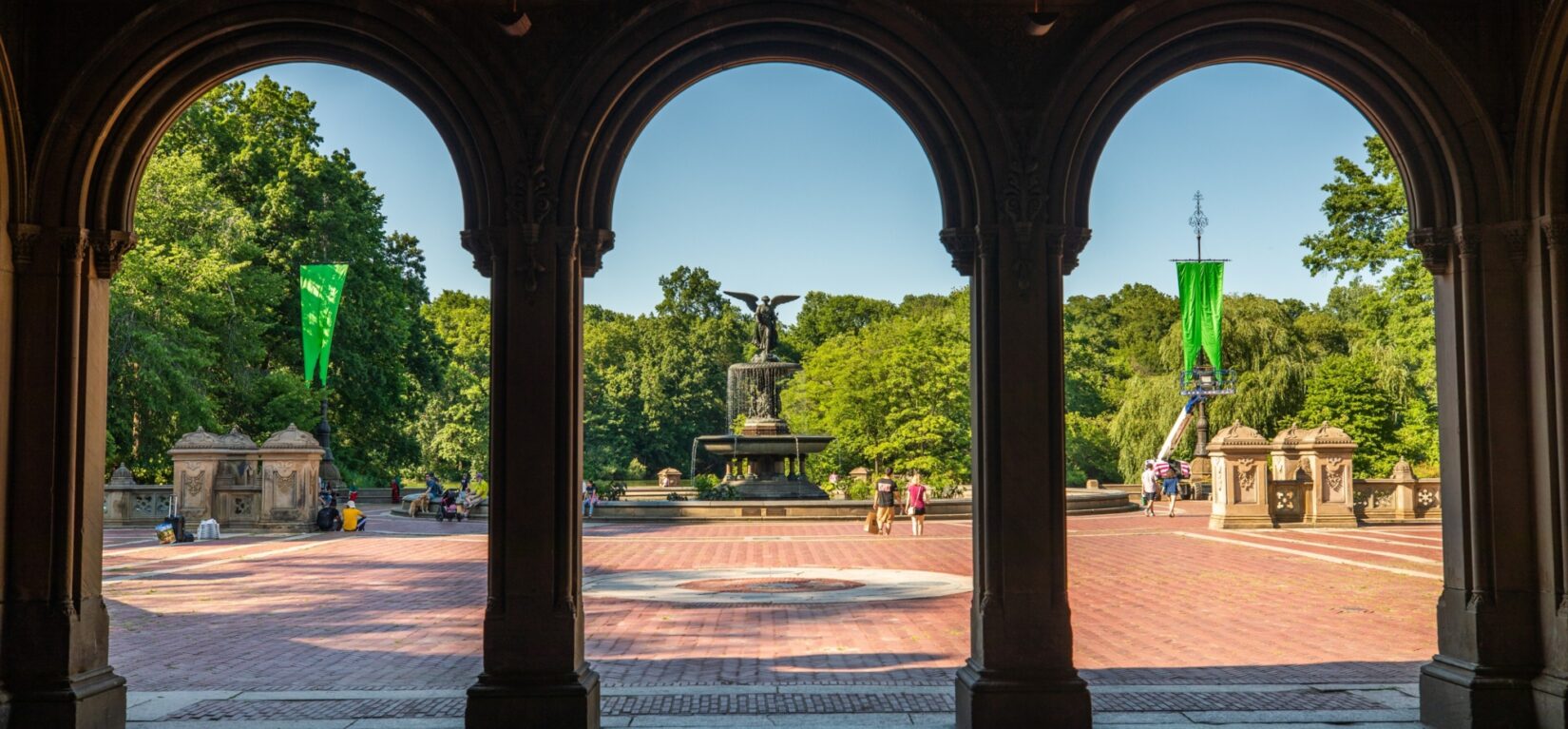Magazine
The Competition: 33 Plans for Central Park in 1858

The Park that we know and love today was designed during a competition run by the Commissioners of Central Park from 1857 to 1858. The first-place winner, the Greensward plan, was inspired in part by the open fields of the English countryside. The plan’s designers, Frederick Law Olmsted and Calvert Vaux, imagined a naturalistic park—one that appeared untouched despite its extensive planning and construction.
As we celebrate the anniversary of the Greensward plan’s victory in the design contest on April 28, 1858, let’s take a look at what Central Park might’ve been like if one of the other 32 plans had been selected.

The original Greensward plan rendered on a sheet of paper many feet long. Copyright: Municipal Archives, NYC Department of Records and Information Services
The competition’s design requirements
Months before the design competition began, details about official plans for “the Central Park” were published in The New York Times. In January of 1857, Engineer-in-Chief Egbert Viele outlined specific intentions for land drainage and park features, including “a cricket ground, for the encouragement of and an indulgence in athletic and manly sports.” Viele’s article would come to inform the rest of the Park design process.
The Park commissioners required all design entries to have some common elements: a parade ground, a drive, three ballfields, an area for a winter skating ground, a grand fountain, an observatory, a flower garden, a music hall, four roads traversing the park, and a budget of no more than $1.5 million.
A lot of cooks in the kitchen
Many of the 32 other submissions proposed radically different approaches to the park’s landscape architecture—ideas that would have drastically altered Central Park, and New York City, as we know it.
Some argued that in order to elevate the City to a European standard, the Park would need to be a formal, ornamental space with displays of civic progress—palaces, fountains, terraces, an Italianate concert hall, museums, manicured gardens, terraces, and a carriage concourse. Others advocated for a naturalistic aesthetic instead. The plans allowed for a combination of architectural elements from a variety of traditions, rather than following one style.
A plan by John Rink featured vast landscapes of formal geometric gardens like those at Versailles. Rink was an engineer and his plan made the military central by proposing a massive parade ground in the center of the Park with tall spectator terraces. He also included an artillery shooting ground for “cannons, muskets and pistols.”

A detail of the original drawing that accompanied John Rink’s entry. Copyright: New-York Historical Society
Although many of Rink’s ideas were unrealistic, he did suggest a museum at the site that would become home to the Metropolitan Museum of Art just a decade later.
Second-place winner Samuel Gustin advised that Central Park be on a “central” site. Developers briefly considered Jones’ Wood, a 150-acre wooded landscape on the Upper East Side, as a possible location. Gustin, a respected horticulturist, advised against the idea. He recommended the park be built on the somewhat barren central site, rather than taking up the task of thinning the already-mature woodland that stretched from Third Avenue to the East River, between 66th and 75th Streets. The matter was put to rest and the land was acquired for the existing Central Park site before the design competition was announced. Gustin later became the superintendent of planting though his entry wasn’t selected.

Samuel Gustin’s submission for the Central Park design competition. Copyright: Central Park Conservancy
A patchwork park
Many of the design entries suggested that the New York Crystal Palace and Latting’s Observatory, constructed for an 1853 World’s Fair exhibition, be moved from 42nd Street into Central Park. The Observatory tower, about 300 feet tall, was then the highest point in New York City and had allowed people a “skyscraper view” of Staten Island, Queens, and New Jersey for the first time. By 1858, both structures had been destroyed by fire.
Three separate entries by George Waring, Samuel Gustin, and Egbert Viele all included transverse roads level with the park grounds, effectively dividing the space into several smaller disjointed parks in a patchwork effect. Fourth-place winner, Howard Daniels, proclaimed that the park should have one grand, central avenue bisecting the park.
While John Rink’s plan sank a small part of the 86th Street Transverse, only the winning design by Olmsted and Vaux had all four of the roads completely hidden out of view beneath the grassy fields, waterways, and picturesque woodlands—allowing visitors to have a more continuous experience of nature.
Now that the “grand symphonic vision” of Central Park has been realized, who could imagine New York City’s beloved park any other way?



